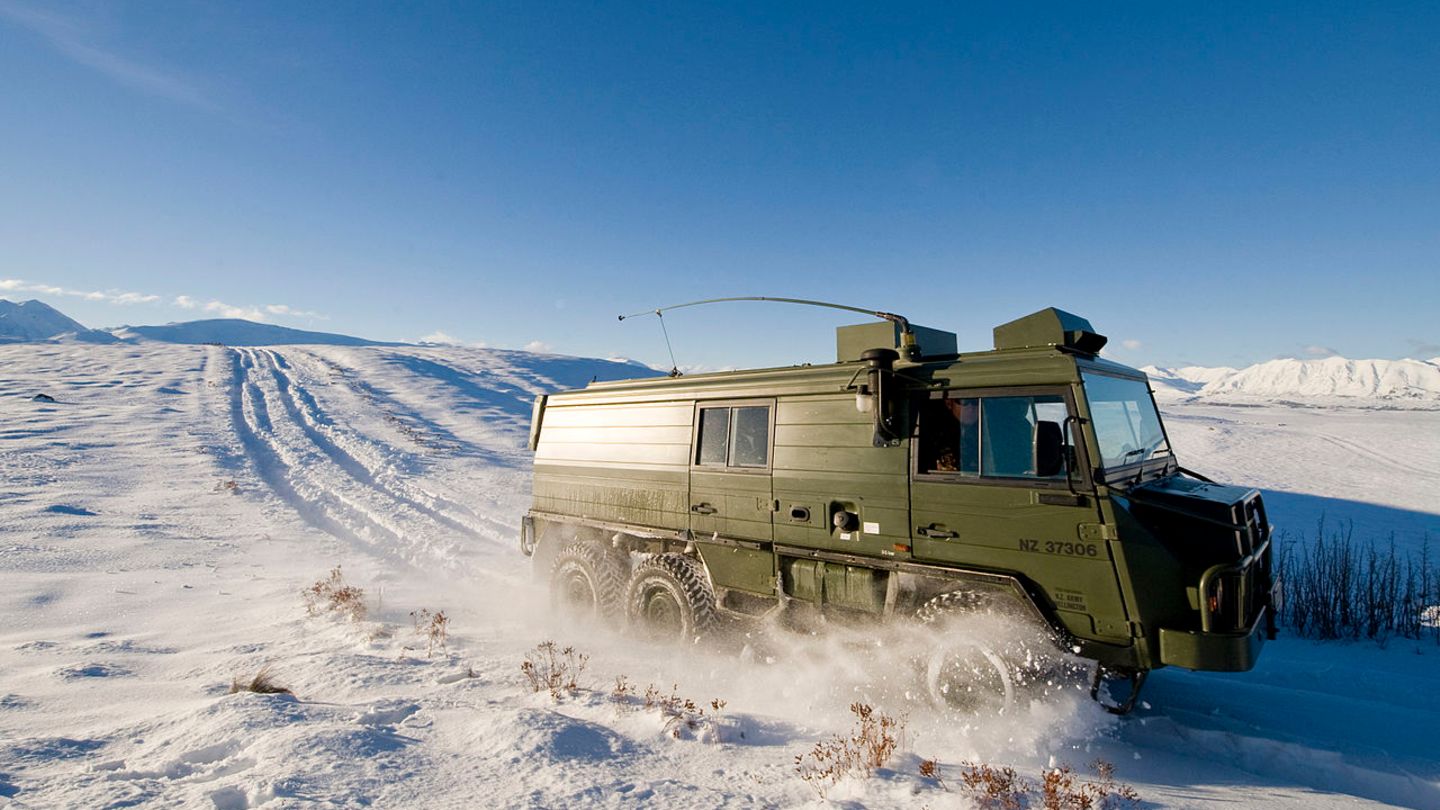An alp high above the Arntal in South Tyrol. The hut can only be reached via a kilometer-long ascent. The landlord there owns two cars. The first is a Mitsubishi Pajero – a real off-roader. One thinks. But: “It’s for the street, if it gets rough I’ll take this one.” Says the man and pulls the tarpaulin from a monster in the Alps: a Pinzgauer.
The vehicle was developed and built by Steyr Puch for the Austrian Armed Forces in Graz. The mini truck can rightly claim to be one of the best, if not the best, off-road vehicles in the world. Its development began in 1964, and the first models were delivered in 1971. More than 30,000 copies were built in total. Pinzgauer are available with gasoline or diesel engines. However, the diesels are clearly in the minority. It was produced as a short 4×4 model or as a 6×6 vehicle with three axles. With a closed roof as a radio and command vehicle or with a tarpaulin cover over a flatbed.
Inexpensive to the perfect all-wheel drive
Pinzgauer were also sold to civilian jobs, for example as a fire engine. Most of the models, however, were accepted by the military. In addition to the Austrian Armed Forces, the Pinzgauer served in the armed forces of the United Kingdom, Switzerland, Saudi Arabia, Jordan and many other nations. In Great Britain the Pinzgauer was built until 2007, in Austria the production line was shut down in 2000.
For years now, the military in the Alps has been repelling the aging workhorses. In 2014 alone, the armed forces retired 700 Pinzgau residents. In general, the condition of the Pinzgauer from Swiss stocks is said to be far better. With the Confederates, the vehicles are serviced to the last, and it is not customary to cannibalize models before they are sold because of the lack of spare parts.
No comfort mobile
The SUVs are available for retail sale at prices starting at around 11,000 euros. However, the price level fluctuates from year to year. It depends on what quantities the military is pushing into the limited market. Registered used cars are available from around 15,000 euros. For a well-preserved copy without a maintenance backlog, however, you have to budget over 25,000 euros.
As indestructible as the Pinzgauer is in the area, private buyers have to make compromises. The driver and front passenger are still reasonably comfortable – a bit like in a Beetle from the early 1960s. Without additional insulation, however, the noise level on board is very high. There is space for larger transports on the loading area, but nobody wants to withstand more than a few kilometers on the longitudinally built-in benches.
You can also tell from the Pinzgauer that it was not built for the street. Tempo 110 should be possible, it is better to leave it at 80 km / h. But the vehicle is reasonably manageable. At 4.17 meters in length and 1.8 meters in width, the two-axle vehicle is significantly smaller than a VW Passat. With a length of up to 5.3 meters, the three-axle vehicle is of course a different caliber, but also no larger than a delivery van.
The workhorse from Graz is not the right choice for the daily commute – but many private buyers convert their tweezers into an expedition camper.
The three-axle vehicle with a large box body offers more space. The closed versions are also popular. They can be upgraded with a retractable roof. Another way to deal with the limited space is to install a sleeping box on the roof.
I am a 24-year-old writer and journalist who has been working in the news industry for the past two years. I write primarily about market news, so if you’re looking for insights into what’s going on in the stock market or economic indicators, you’ve come to the right place. I also dabble in writing articles on lifestyle trends and pop culture news.




